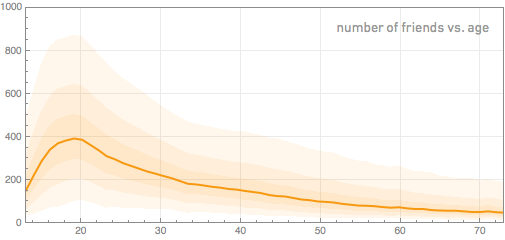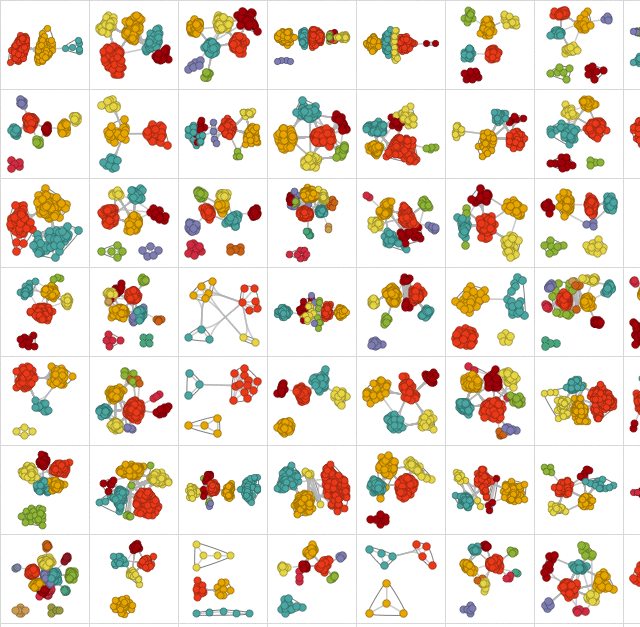Stephen Wolfram Mathematical Analysis of Social Networks

Changing the location of Facebook users
Mathematician and programmer Stephen Wolfram is known as the author of the program Mathematica and the scientific search engine Wolfram Alpha . Despite the large amount of current work, Stephen was always interested in the question: is it possible to analyze the trajectory of a person’s life using mathematical methods?
Last year, Stephen Wolfram made the first attempt and published the results of his personal digital data analysis : visualization of 300 thousand sent emails since 1989, 100 million keystrokes since 2002, phone calls, meetings, editing time for different types of files since 1980 and etc. Such personal analysis is available to all subscribers to the paid version of Wolfram Alpha Pro.
Now it's time to expand the concept of personal analysis to the processing of data from social networks. Recently, the Personal Analytics for Facebook section (personal analytics for Facebook) was opened on the Wolfram Alpha search engine, and the SocialMediaData function was added to the Mathematica software package. Already have the first results .
')
To begin with, Stephen Wolfram made the basic statistical calculations: he analyzed the age of Personal Analytics for Facebook users, the average number of friends. The graph shows the dependence of the number of friends on age.

The dependence of the number of friends on age

Dependence of the number of friends on marital status and age
A more detailed analysis allows us to understand at what age a person makes acquaintances. The following graph shows the positive correlation between the user's age and the average age of his friends: almost always throughout the life of a person, he has most of his acquaintances of exactly the same age as him. This law is violated only at the age of 15 (when most of the acquaintances are over 15) and after 55 years (most of the friends are under 30).

The correlation of the user's age and the average age of his friends
Human friends are usually divided into several well-formed clusters. For example, here are clusters of a 15-year-old daughter of Stephen Wolfram.

Interestingly, each cluster reflects an event in life. Usually, a person has 3-4 such clusters, which have a different form, depending on the specifics of the event, the personal qualities of the person and other unique circumstances. So, by running the FindGraphCommunities function, you can create a unique “footprint” that will fairly accurately reflect a person’s personality and events in his life. The illustration below shows the social graphs of some people.

The trajectory of a person’s life is traced in the graph with a change in marital status.

Change in marital status with age
The information coincides quite accurately with the official census, except for typical errors, when teenagers mistakenly indicate a married / married status in their Facebook profile.

But as for age distribution, the audience of social networks is completely different from the census data.

It is interesting to follow how the vital interests of people change with age. In particular, interest in weather, politics, and health is sharply growing, and interest in fashion and video games is steadily declining.

Another aspect of personal analytics is migration flows. Different cities in the column "Birthplace" and "Residence" help to make a picture of current migration processes. For example, you can see that the USA is the most attractive country for Russian immigrants.

Facebook Data
Source: https://habr.com/ru/post/177931/
All Articles